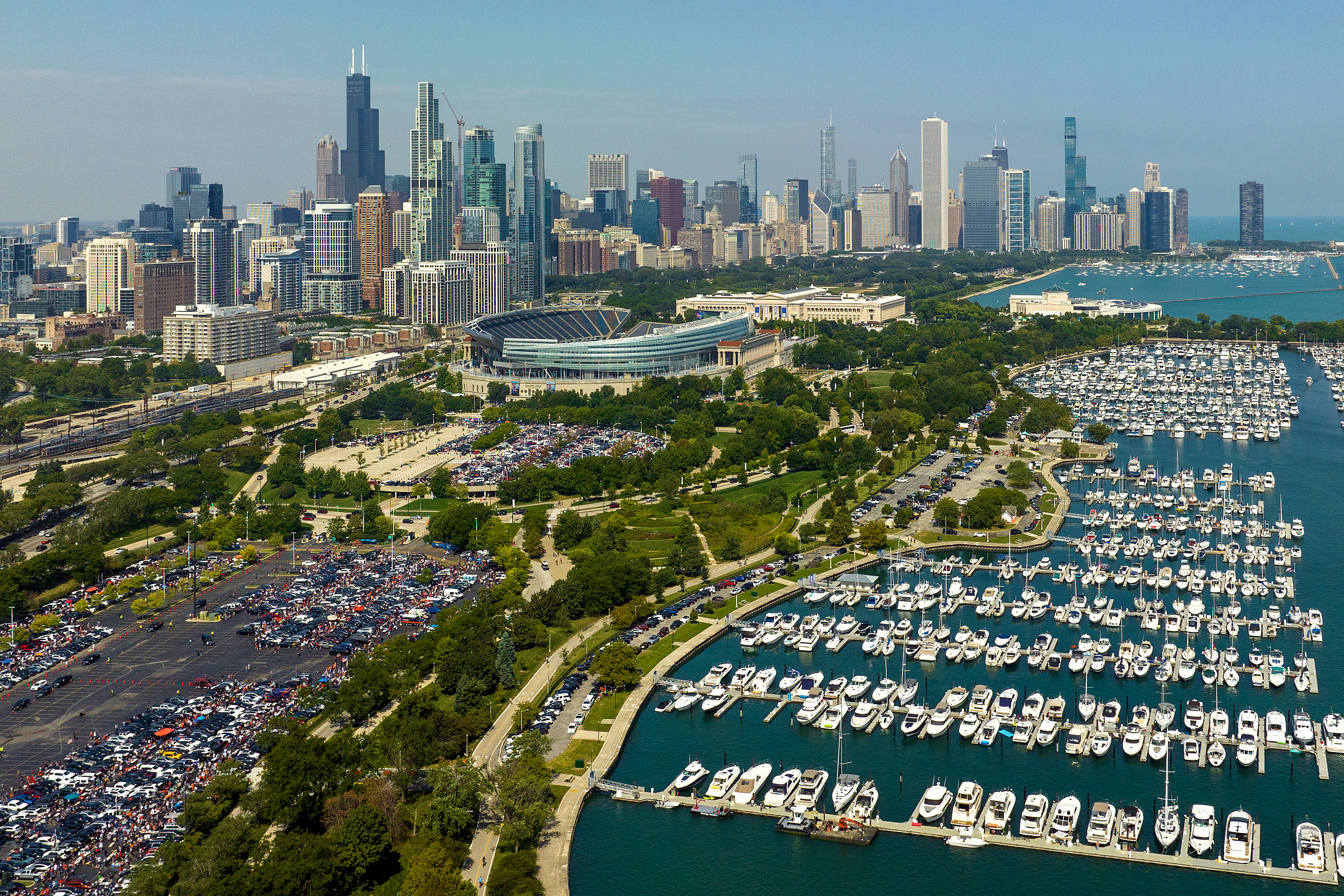Of the nearly three dozen migrants expected to be evicted from shelters Sunday as the city began enforcing Mayor Brandon Johnson’s administration’s 60-day shelter stay rule, just three were removed.
The city confirmed Sunday afternoon that the remaining 31 migrants were given extensions; 27 because they are still in the process of applying for public benefits and four due to pregnancy or disability.
The city did not immediately confirm which shelters the three had been evicted from, but officials had said Friday that evictions would begin at the shelter on Elston Avenue — housing 800 individuals — near Goose Island; the former Wadsworth Elementary School building — housing around 550 — in Woodlawn; and the Gage Park Field House — housing around 300.
The city said Friday that it would not begin evicting migrant families until the summer.
Feeling out of the loop? We'll catch you up on the Chicago news you need to know. Sign up for the weekly Chicago Catch-Up newsletter here.
Fewer than 11,000 migrants remain in shelters, according to the city’s Office of Emergency Management and Communications, and around 2,000 are expected to have to exit by the end of April.
The city did not immediately respond to requests for comment on the evictions, but late Sunday evening Ald. Andre Vasquez (40th) reiterated the position he and around 20 alders and organizations stated last week.
“We don’t believe the city should be in the business of evicting people, especially those who can’t get work authorization and can’t get rental assistance,” said Vasquez, chair of the Committee on Immigrant and Refugee Rights.
Local
On Friday, Johnson defended evictions as a way of incentivizing independence.
“By encouraging resettlement, while also providing case-specific extensions with a focus on health and safety, we are advancing a pathway to stability and self-sufficiency,” Johnson said.
Vasquez responded to those claims.
“To think that evictions are encouraging resettlement as if people want to live in a shelter, is not accurate,” he said, noting people make the trek to the U.S. for a better life. Evictions instead create “desperation.”
The North Side alder called for greater transparency in the evictions process and is watching to see how many exemptions will be given following the vote Tuesday on a Johnson-supported initiative to provide funding for unhoused people.
“When the city is contributing to homelessness while trying to solve it, it doesn’t make sense,” he said. Instead, he added, “it undermines our arguments for the things we want to put forward.”
Those exiting will be able to reapply for a bed at the city’s designated “landing zone.”
Migrants who spoke with reporters outside the site at 800 S. Desplaines St. on the Near West Side said they had not seen migrants returning there Sunday.
Nicolet Hernández, 22, said she had been there for two days, sleeping aboard a city bus.
The Venezuelan native said it wasn’t ideal but the buses were “super clean and the staff members speak Spanish.”
Around 79 people were staying at the site Sunday, far fewer than the several hundred that were housed there for as long as a week at a time in January.
A bus operator said the speed with which migrants were moved from the landing zone to shelters had improved tremendously from earlier in the year. The bus operator did not give a name because they weren’t authorized to speak.
New arrivals at the landing zone will also now have to be vaccinated for measles, mumps, rubella and varicella, depending on their age, before entering a shelter.
Of the 12 cases reported in the city since March 7, 10 were among migrants staying at the shelter on Halsted Street in Pilsen, which houses around 1,800 people. Chicago Department of Public Health officials did not immediately respond to requests for an update in the number of cases detected.
Migrants outside some of the shelters where evictions were supposed to happen had not noticed anyone being evicted Sunday.
In Gage Park, Luis, a migrant from Caracas, Venezuela, watched as locals down the road protested the use of the park district building as a shelter. Luis said he wasn’t there by choice.
“If I had my papers to work, I would be doing that and getting a place of my own right away,” said Luis, who has been at the shelter for about three months.
He said he didn’t come to the U.S. for a handout but because his life had been threatened by corrupt government officials back home. He aims to become a police officer.
His eviction date was set for April, but it had been delayed because a relative was close to securing an apartment where both of them could stay. He and others outside the shelter were aware that evictions were underway, but they had not seen or heard of anyone being forced out of that particular shelter.
But the neighborhood park district field house’s use as a shelter has disrupted the lives of some locals.
“This was like a second home, and we want to come back home,” said Tiffoni Stepney-Davis, whose 27-year-old daughter, Breche Hardy, had been enrolled in special needs programming there since she was 12.
Outside the Elston Avenue shelter, migrants told reporters they hadn’t seen anyone leave on Sunday.
Victor José said he had been at the North Side shelter for around three months. The former airport baggage handler couldn’t recall his exact eviction date, only that it wasn’t too far away and he hoped he would be able to legally work then, possibly at O’Hare or Midway.
In the meantime, the 32-year-old saw little point in even looking for an apartment.
“I would like to,” he said. “But first I need to have a permit and stable income.”



